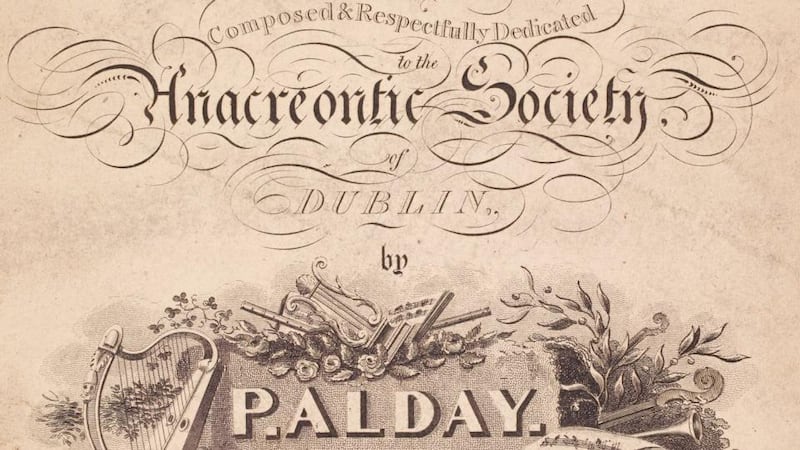By way of restoring diplomatic relations after my list of “reasons to hate the French” last week (it was nothing personal – there was a rugby match on and we all had to do our bit), now might be a good time to thank France for the first musical symphony every written in Ireland.
The composer was Paul Alday, born circa 1763 in either Paris or Perpignan, who came to Ireland, as a singer and violinist, in about 1804. He took over a music shop in Dublin’s Dame Street. And he was still here when he died in 1835.
It was known to music historians that he had written a couple of symphonies during his Dublin years. But these were long lost to audiences until about 20 years ago, when Alday’s “wind parts” turned up in the collections of the Royal Irish Academy of Music.

Since then, pathologists from the Research Foundation for Music in Ireland have been searching for his other parts. They suspected a good place to look would be among the “floor-to-ceiling” shelves of musical documents, some uncatalogued, in the National Library.
And sure enough, the search team of Catherine Ferris and Lindsay Dowling, with help from the French Academy of Music, found the remains of Alday’s “Grand Symphony” (circa 1816) there, the first such composition written in Ireland, but unheard for the best part of two centuries.
Dusted off, literally and metaphorically, the piece was given its modern premiere last year at the Dublin Institute of Technology Conservatory.
And the ripples from that performance have just led to its German premiere, at the Frankfurt headquarters of the Répertoire Internationale des Sources Musicales, where it was the centrepiece of an Irish-themed programme over St Patrick’s weekend.
Alday, incidentally, dedicated his symphony to the “Anacreontic Society of Ireland”, a group of aristocratic amateurs who organised recitals at which they could perform with professionals – musical pro-ams, if you like.
The society was named for Anacreon, the ancient Greek composer of hymns and drinking songs, who must have been very much in fashion in 1816 Dublin, because another composer of the period, Thomas Moore, was widely known by the nickname “Anacreon Moore” in tribute to his lyrical brilliance.
And that brings me to a second transnational project in which the hardworking musicophiles of the DIT conservatory are involved – this time an Irish-German one.
It is a reasonably well-known fact that the great Beethoven wrote some Irish songs in his time. Less known is that, in simple numerical terms, he wrote more pieces of that genre than he did of anything else, a prodigious 72 in fact. Sadly, these have not traditionally been considered among his successes. And Tom Moore is part of the reason.
Beethoven’s Irish works were commissioned by a Scotsman named George Thomson, who had an ardent ambition to promote the folk melodies of Britain and Ireland by getting leading European composers to set them for classical instruments. Where necessary, he also hired poets to improve the lyrics.
Robbie Burns was an early collaborator. But with Burns in an early grave by the start of the 1800s, Moore, whose star had just begun rising, was approached to write lyrics for the Beethoven works. He thought about it, then decided to do his own Irish songs. The rest is musical history.
Suffice to say that Moore did not suffer for turning down a chance to write for Beethoven. On the contrary, it may have been the immortal German who lost out.
The first of his Irish songs were published 200 years ago, in 1814, and were well enough received. Handicapped in part by the lesser lyricists to whom Thomson resorted, they paled in comparison with Moore's Melodies , which had propelled their author to superstardom.
The Beethoven songs enjoyed a minor revival back in the early 1970s when tenor Frank Patterson performed some for an RTÉ series and then recorded an album. But even by then, it had become the obsession of another Irish singer, Tomás Ó Suilleabháin to have the songs refurbished using better lyrics, from Moore and other sympathetic sources.
With the help of his daughter Margaret, Ó Suilleabháin achieved this ambition before he died in 2012, aged 92. The works have now been recorded by members of the DIT conservatory. And fresh from reviving Alday's lost symphony, the conservatory will unveil Beethoven's Irish Songs Revisited , in a set of four CDs, early next month.
fmcnally@irishtimes.com








